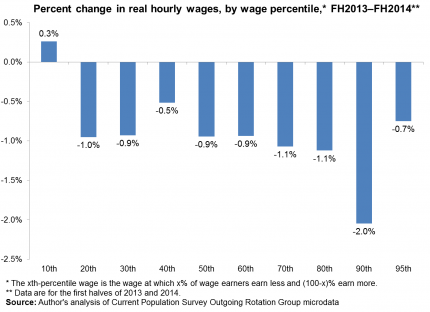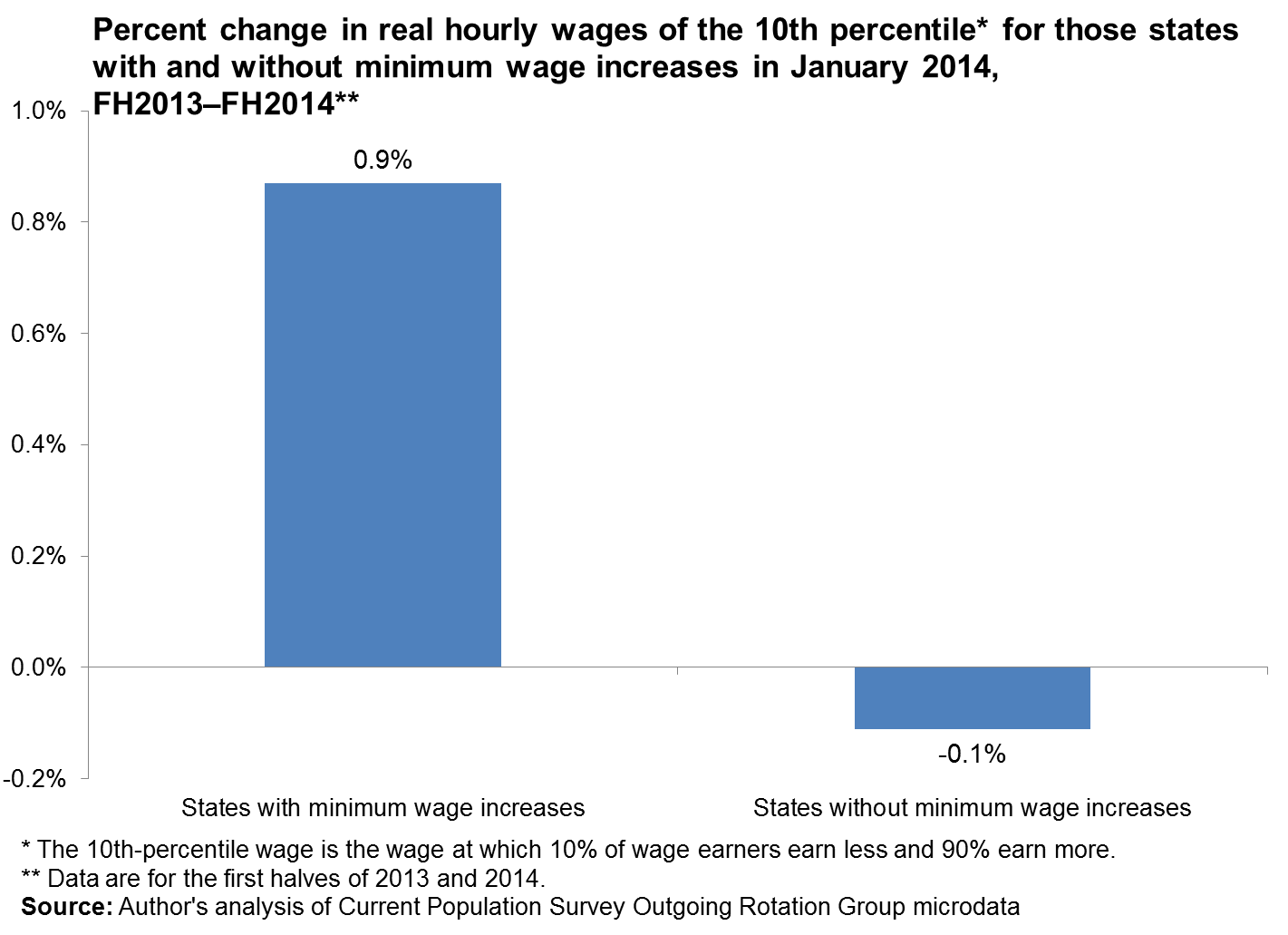The Dog That Didn’t Bark, or, Why Wages at the Bottom of the Distribution Were the Only Ones That Didn’t Fall over the past Year
In writing my paper on the most recent wage trends released today, I came across an interesting finding: Wages at the bottom of the wage distribution were the only ones that didn’t fall between the first half of 2013 and first half of 2014. The figure below shows the change in real (inflation-adjusted) wages over this time at different points in the wage distribution. What is obvious from the figure is that wages have fallen for nearly every group. If I showed you the same trends by education, as I do in the paper (see Figure O), you’d see an even starker story: Wages over the past year have fallen for all education groups, including those with college or advanced degrees.

So, why didn’t the 10th percentile wage fall like all others? What is so special about that wage that sits below 90 percent and above 10 percent of workers (i.e., is not generally earned by particularly privileged workers)? Simple—several states raised their minimum wage over that period.
To see the story more clearly, I looked a little closer at the 10th percentile wage, separating out states with and without increases in the minimum wage in the first half of 2014. Minimum wage increases occurred in a number of states, which cover about 40 percent of the US workforce (see the map as Figure K in my paper). Some of the states saw relatively large legislated increases, while others had smaller increases resulting from indexing the minimum wage to inflation. The figure below compares the wages in these states with those in states without minimum wage increases.

Between the first half of 2013 and the first half of 2014, the 10th percentile wage in states with minimum-wage increases grew by 0.9 percent, while it fell 0.1 percent in states without a minimum-wage increase. While wages for all other deciles fell across both sets of states, the 10th percentile in states with minimum-wage increases was the only group where real wages actually increased. This indicates that strong labor standards can improve outcomes even when the unemployment rate remains high and workers have severely reduced bargaining power. And it should definitely remind us that policies aimed at boosting wages for workers can work—and we should be a lot more ambitious about our wage agenda.
Enjoyed this post?
Sign up for EPI's newsletter so you never miss our research and insights on ways to make the economy work better for everyone.